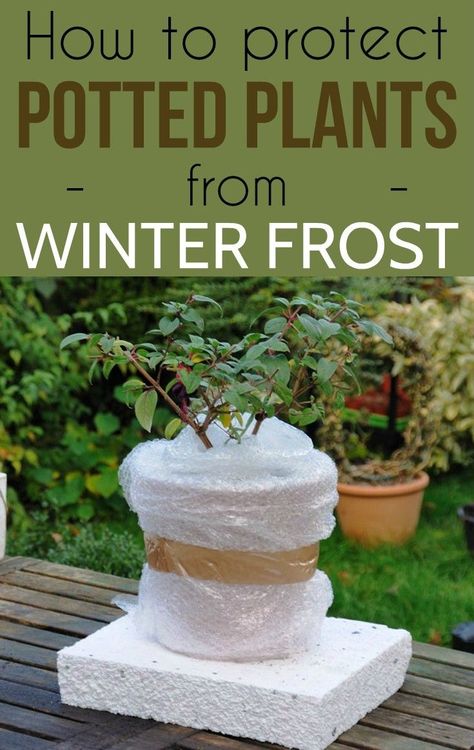How to protect tender plants from frost
Frost Covers & Cold Snap Care
Whether you fell under the spell of some eye-catching color at the garden center or just wanted to get a jump on the gardening season, planting too early can create a crisis when a cold snap threatens. Helping your seedlings survive the big chill isn't impossible, but it does require some preparation.
In most cases, you can count on makeshift methods to protect plants when the thermometer dips. But for larger plantings, such as a vegetable garden, you'll need to arm yourself ahead of time with the right gadgets to guard plants against frosty mornings.
Know The Limits
In order to understand what steps to take when freeze warnings threaten, you need to know the point at which treasured greenery fades to frost-burned brown. The general rule of thumb is that most plants freeze when temperatures remain at 28°F for five hours.
Of course, there are exceptions to this rule. Seedlings, with their tender new leaves, often give up the ghost when temperatures dip to 32-33°F. Tropical plants have differing low-temperature thresholds. Some keel over when temps fall to 40°F; others crumble at 35°F. Other plants are just hardy by nature and can withstand temperatures as low as 18-20°F. To find the threshold for your plants, search garden books and online resources.
Quick Fixes For Frost Warnings
Pick It Up – The easiest cold-protection scheme is to move plants out of harm's way. This works with seedlings in flats and potted plants. Moving plants under a deck, into a garage or shed, or onto a porch with a roof often offers ample protection.
Count On Water – Water soil just before sundown to raise overnight air temperature around plants as the water evaporates. Fill gallon jugs or buckets with water and place them in the sun during the day. At night, move them near endangered plants. The water will moderate air temperatures; if it freezes, it will release heat. For greatest effect, paint a few water-holding containers black to maximize daytime heating.
Keep Air Moving – Cold, still air does the most damage to plants. Stir a breeze all night with an electric fan to keep frost from forming on plants. Remember to protect electrical connections from moisture.
Cover Plants – Protect plants from all but the hardest freeze (28°F for five hours) by covering them with sheets, towels, blankets, cardboard or a tarp. You can also invert baskets, coolers or any container with a solid bottom over plants. Cover plants before dark to trap warmer air. Ideally, coverings shouldn't touch foliage. Anchor fabric coverings if windy conditions threaten.
In the morning, remove coverings when temperatures rise and frost dissipates. Heat from the sun can build beneath solid coverings, and plants can die from high temperatures.
Break Out Blankets – Keep gardening blankets, often called row covers, on hand. These covers are made from synthetic fibers or plastic in varying thicknesses. Lay row covers directly on plants, or create a tunnel by suspending them over a bed using stakes.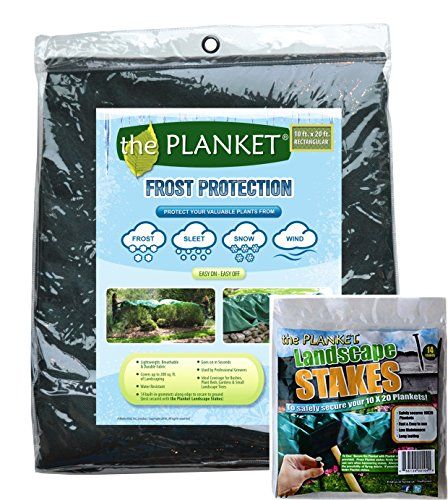
Turn On Lights – An incandescent light bulb generates sufficient heat to raise nearby air temperature enough to protect a plant from the deep freeze. Bulbs must be close to plants (within 2-3 feet) for this technique to work. (Fluorescent bulbs don't generate enough heat for this chore.)
Protect Individual Plants – Install hot caps – rigid plastic containers with venting holes – over individual seedlings at planting time. Hot caps act like cloches (mini greenhouses), but venting holes eliminate the daily chore of placing and removing the covering. Create the equivalent of a hot cap using plastic two-liter bottles or gallon jugs with bottoms cut off and lids removed (but saved). Replace lids at night when cold temperatures swoop through.
A twist on the hot cap idea is a Wall O'Water tepee, which encircles individual plants with a sleeve of water-filled tubes. The water absorbs the sun's heat during the day. At night, as the water slowly freezes, it releases the stored radiant heat of the sun, keeping air inside the tepee frost-free.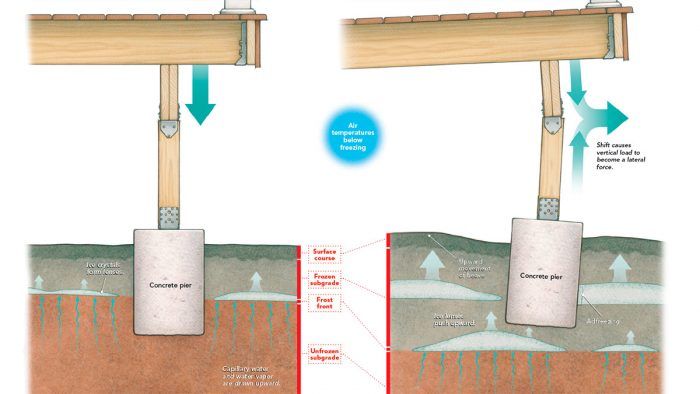
More Lawn Solution Articles for You
Winter Garden Checklist For Mild Climates
Winter garden checklist during mild climates. Winter doesn't signal the end of gardening season. There is many chores such as planting,...
read more
How To Prepare Your Garden For Frost
If winter is coming soon, this simple to-do list will help you prepare your garden for frosty weather, from harvesting, to draining hoses to...
read more
Planting After Danger Of Frost
For a successful spring planting, be aware of the danger of frost. It can kill young seedlings. Knowing the last frost date in your area can...
read more
Copyright © 2023 bioadvanced.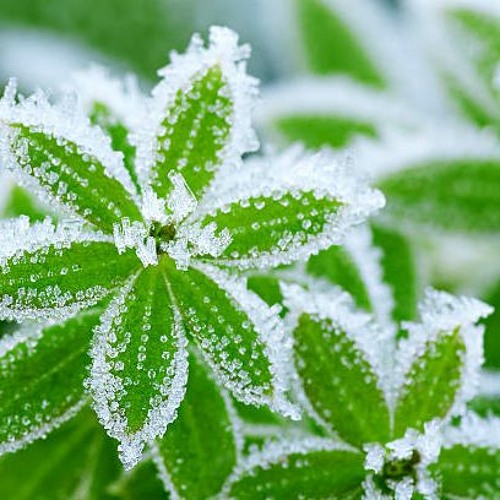 com All Right Reserved.
com All Right Reserved.
How to protect plants from frost: 10 quick and easy methods
When you purchase through links on our site, we may earn an affiliate commission. Here’s how it works.
(Image credit: Getty Images)
As the cold weather sets in, it's important to know how to protect plants from frost, as tender and young plants in particular can be wiped out by a sudden cold snap.
There are many quick ways you can protect more vulnerable plants and it's definitely better to be safe than sorry – there is nothing more devastating than seeing the beautiful plants you have lovingly nurtured destroyed seemingly overnight by a visit from Jack Frost.
Unless you live in a warm zone, it is likely that some of the ornamental plants and crops you have included in your garden ideas will be in need of some protection, so read on to find out how you can help their survival through the colder months.
How to protect plants from frost – which plants to protect
(Image credit: National Trust)
Not all plants in your backyard will need protection from the frost, but there are certain categories that will. These include:
- Young seedlings and new growth
- Tender perennials
- Half-hardy varieties
- Tropical and subtropical plants such as palms and banana plants
Signs of frost damage include blackened, distorted or limp growth and the leaves turning green on evergreen plants and shrubs.
If in any doubt, research the conditions and hardiness of specific plants. Err on the side of caution and include frost protection in your winter garden ideas if cold weather is forecast in your state or area.
(Image credit: Getty Images)
In terms of vegetable crops, there are some that actually benefit from a dose of frost and can taste better afterwards. 'There are some veg crops that are frost tolerant, if not frost resistant,' explains Nicole Burke, author of Rooted Garden .
If you live in a colder zone, it is therefore worth learning how to grow kale and other frost tolerant vegetable crops.
1. Bring potted plants indoors
(Image credit: Future)
There are many quick ways for how to protect plants from frost, and among the easiest is to bring potted plants indoors, especially tender container plants.
Potted plants are more susceptible to frost damage because they don't have the insulated benefits of of those planted in the ground.
Use a conservatory, garden room, garage, porch or frost-free greenhouse to overwinter potted plants – not somewhere that is too warm.
This can be a suitable option if you're wondering how to overwinter fuchsias in pots, or how to winterize hydrangeas, for example.
2. Add a layer of mulch on garden beds
(Image credit: Alamy)
'Apply dry mulch, such as chipped bark or straw around borderline-hardy plants, such as agapanthus, phygelius (cape fuchsia), hedychium and the architectural melianthus to protect the crown,' advises plant expert Sarah Raven .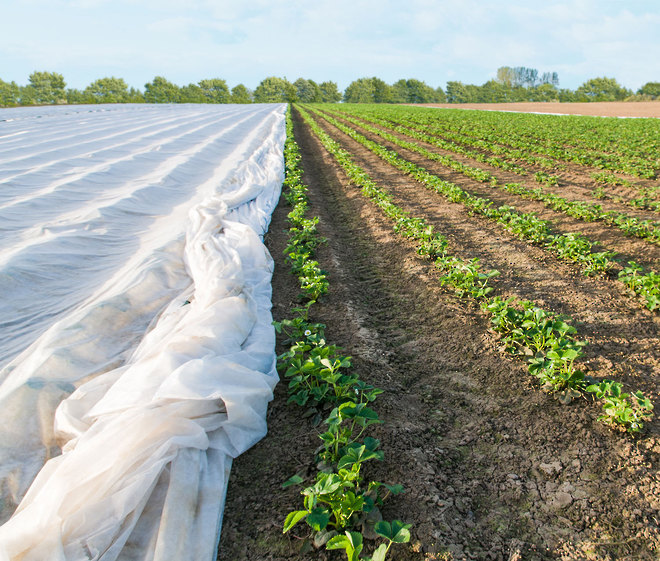
You could also use leaf mold or piles of leaves to add some extra protection on garden beds and provide a barrier against the cold.
Find out how to make leaf mulch to protect tender and emerging plants.
3. Cover plants with fleece
(Image credit: Getty Images)
You may wonder how to protect plants from frost when they are planted in the ground? One method – which is useful for larger garden plants and shrubs – is to cover them with horticultural fleece. You could use blankets or bubble wrap, too, to create a protective cover. These Amazon plant covers come highly recommended by reviewers.
Place several stakes around your plants and then cover these with the chosen material to create a tent-like structure. Weigh down the corners to prevent the coverings from blowing away in the night and remove the covers during the day.
You can use this method for plants that require winter protection, such as agapanthus, cordyline and tree ferns.
'Fleece is very effective, but if you prefer something less obtrusive, a circle of wire netting filled with bracken or leaves will keep the cold at bay, too' advises Sarah Raven.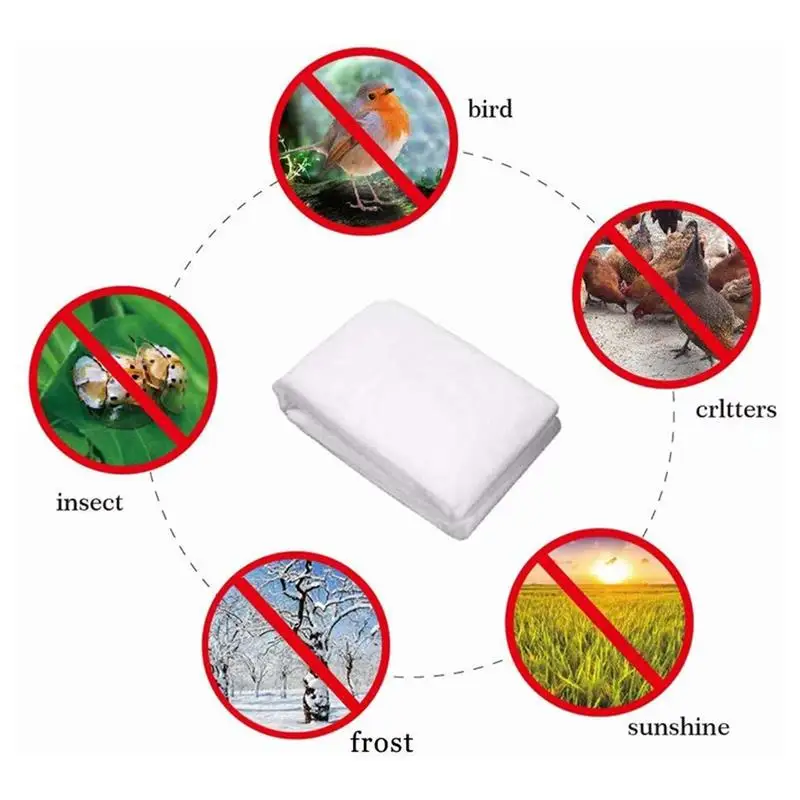
You can also wrap the trunks of young trees with horticultural fleece or blankets, such as if you're growing some of the best fruit trees or have mastered how to grow lemon from seed.
4. Place tender plants in a sheltered spot
(Image credit: Getty Images)
The mantra 'right plant, right place' is relevant when considering how to protect plants from frost.
'Always plant half hardy and frost tender plants in a sheltered position, preferably near a south or west-facing wall, which will absorb heat during the day and radiate it at night,' advise the experts at Jacksons Nurseries .
'Eliminating the wind chill factor can substantially reduce the amount of frost damage incurred,' they add.
Other sheltered positions will include next to fences, under large evergreen trees for gardens, under the protection of pergola ideas or in patio or courtyard areas, as long as these also receive plenty of sunshine.
While a sunny, sheltered spot is ideal for many tender plants, do not place early-flowering plants, such as magnolias and camellias, so that they are exposed to the morning sun. 'The rapid thawing of frozen buds can result in blackening and bud drop,' advises Guy Barter, horticultural expert at the RHS .
'The rapid thawing of frozen buds can result in blackening and bud drop,' advises Guy Barter, horticultural expert at the RHS .
5. Lift and store tender perennials
(Image credit: Getty Images)
Tender perennials that have bloomed and died down can be lifted to protect them from frost.
Store the roots, bulbs, tubers and corms in a cool but frost-free place, such as a potting shed or greenhouse. There are lots of mini greenhouses to shop at Amazon , should you only have a few tender perennials to protect.
This is a suitable method for how to overwinter dahlias or how to overwinter begonias.
6. Protect tender plants with a cloche
(Image credit: Future / Michelle Garrett)
If you're wondering how to protect plants from frost in the vegetable patch, then a cloche is one of the best methods. A cloche can be used to protect seedlings and smaller plants from frost.
Cloches are bell-shaped covers made from glass or plastic that can be placed over the plants. You can buy cloches or even make your own out of recycled objects. They also sell a range of cloches on Amazon .
You can buy cloches or even make your own out of recycled objects. They also sell a range of cloches on Amazon .
'Cut-off large plastic bottles or milk containers can be turned into homemade cloches to embed into the soil around small plants and seedlings to provide protection,' advise the experts at Jackson Nurseries.
Remove them during the day to allow the plants to benefit from the warmth and energy of the sun.
Cloches are ideal for use with young vegetable crops that are sown in fall, such as broad beans, spinach, scallions or spring onions and asparagus.
7. Move plants into a cold frame
(Image credit: Getty Images)
Young hardy annuals that are sown in fall may also benefit from some protection from frost.
Place them in the shelter of a cold frame over winter, although ensure they have good ventilation on warmer days.
You could make your old cold frame if you don't already have one, advise the experts at Jacksons Nurseries.
To make your own temporary cold frame:
- Bend slender, metal rods into loops – you could use wire coat hangars for this
- Insert the ends of the metal loops into the ground either side of a row of crops or plants
- Lay a sheet of clear plastic over the frame and secure it in place to protect the plants below
8. Water plants in the morning
(Image credit: Getty Images)
You probably wouldn't think that your routine for watering plants could make a difference when considering how to protect plants from frost – but in fact it can help support any protective measures you take.
It is best to water plants in the morning during winter and when there is a risk of frost, because wet soil actually absorbs heat during the day and has an insulating effect.
9. Wrap containers
(Image credit: Ian West / Alamy Stock Photo)
If you are unable to move containers indoors as a method for how to protect plants from frost, then try to protect them from the elements outdoors by placing the pots in sheltered areas, and where possible grouped together for added protection against the cold and wind.
Container plants are more likely to suffer from their roots freezing. To prevent this, 'wrap the containers with bubble wrap from Amazon or straw, or bury the pots in the ground with just the rim showing, to benefit from the insulating properties of the ground,' advise the RHS experts.
Also raise containers using pot feet or by resting them on bricks to allow water to drain away more easily, and prevent plants sitting in icy water.
10. Choose the right plants for your backyard
(Image credit: Future / Camilla Reynolds)
Rather than trying to protect plants that are not suited to the climate of your backyard, instead choose those that are reliably hardy in the zone where you live. This will prevent the disappointment of losing plants when they aren't adequately protected.
Many evergreen shrubs and plants are fairly hardy. Plants will have a hardiness rating ranging from fully hardy – able to withstand temperatures of 0-10 °F (-18 -12 °C) – to frost tender, which might not survive being exposed to temperatures below 40-50 °F (4-10 °C).
While this might limit to some extent the plants or crops you can include in your garden, there will still be plenty of options suitable to you hardiness zone.
You can also include some of the best winter flowers to plant for color and interest in the colder months, or best winter plants for pots and borders.
What can I cover my plants with to prevent frost?
There are many materials that you can use to cover plants with to prevent frost.
You can find many permeable horticultural fleeces and frost protection products on the market, but can also use materials that you can find around the house – just make sure they are lightweight, breathable and insulating.
Options to use include:
- Straw
- Bubble wrap
- Blankets, bed sheets, towels
- Newspaper
- Leaves or other organic materials
What temperature should I cover my plants for frost?
The temperature that you should cover your plants from frost to protect them will depend on the individual plants and the conditions and position in which they are planted.
Frost occurs in temperatures below 32°F (0°C) so this is the point at which you need to be protecting plants in winter.
Most plants will need protecting from temperatures of 30°F (-2°C) or lower, but frost tender specimens should be protected before temperatures dip this low.
Can I use plastic bags to cover plants from frost?
It is not advisable to use plastic bags to cover plants from frost. This is because plastic can damage your plants if it makes contact with foliage, as it holds water against the plant and causes more damage from freezing.
It also isn't a very insulating material, nor is it an eco-friendly or a sustainable option, so look for alternatives when deciding how to protect plants from frost.
Rachel is senior content editor, and writes and commissions gardening content for homesandgardens.com, Homes & Gardens magazine, and its sister titles Period Living Magazine and Country Homes & Interiors. She has written for lifestyle magazines for many years, with a particular focus on gardening, historic houses and arts and crafts, but started out her journalism career in BBC radio, where she enjoyed reporting on and writing programme scripts for all manner of stories.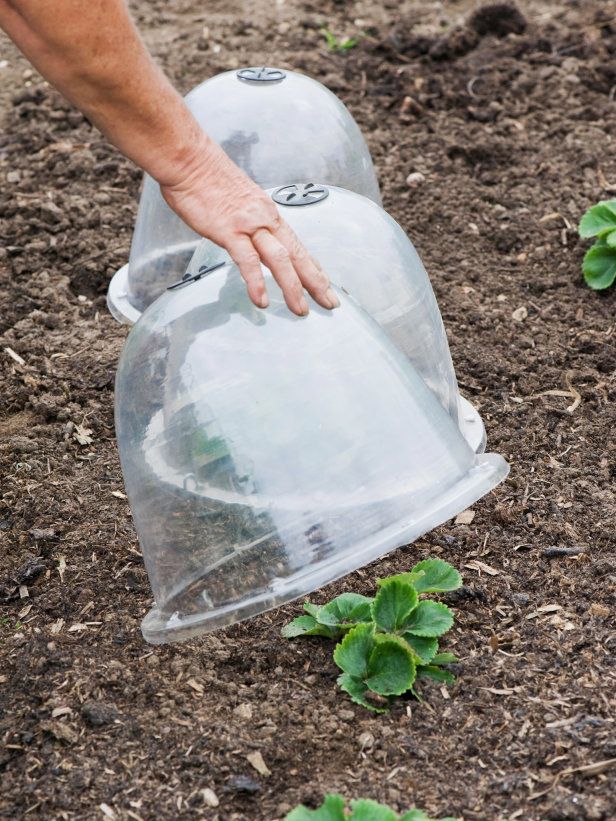 Rachel then moved into regional lifestyle magazines, where the topics she wrote about, and people she interviewed, were as varied and eclectic as they were on radio. Always harboring a passion for homes and gardens, she jumped at the opportunity to work on The English Home and The English Garden magazines for a number of years, before joining the Period Living team, then the wider Homes & Gardens team, specializing in gardens.
Rachel then moved into regional lifestyle magazines, where the topics she wrote about, and people she interviewed, were as varied and eclectic as they were on radio. Always harboring a passion for homes and gardens, she jumped at the opportunity to work on The English Home and The English Garden magazines for a number of years, before joining the Period Living team, then the wider Homes & Gardens team, specializing in gardens.
How to protect the growth from spring frosts. Metodi zahistu
The weather is especially unstable in the spring. It can be warm during the day, and freezing at night. Why work, to save the tree from the inadmissibility of the tree, how to bloom?
How do you know what frosts will be?
In order for the garden to be in a good state, it is necessary to look after it and marvel at the weather forecast. And yet, there is no such possibility, following the memory, that the frosts will ring out in the morning and at night.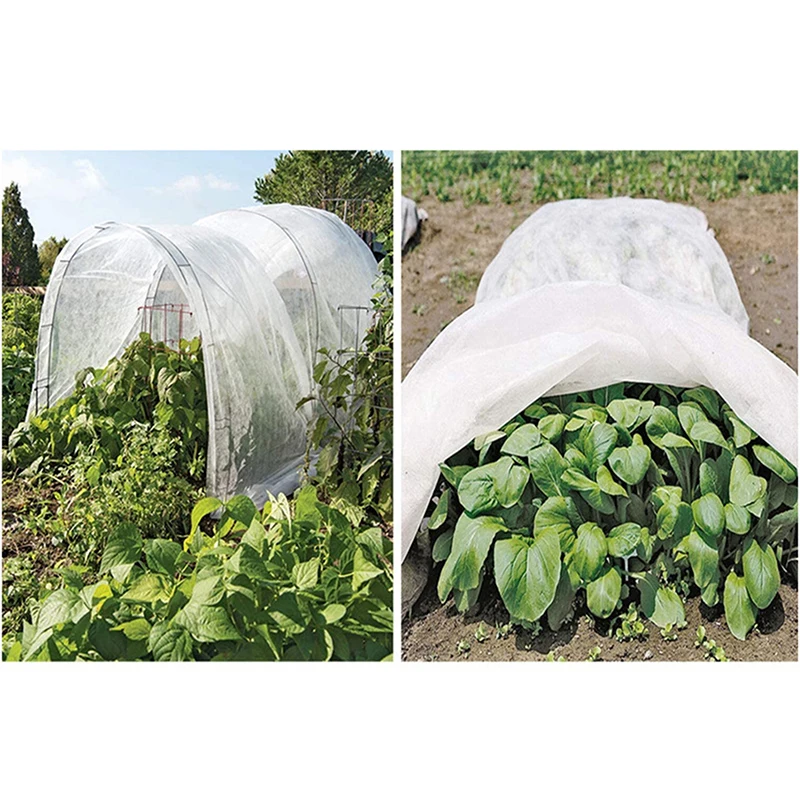
And also other officials, for which you can understand that it will be cold:
Such signs will help you to understand what it is necessary to protect the garden from the cold.
Vicor growers grow in different ways.
Finishing
When the temperature drops low, you can spray the tree lightly with salted water. It is necessary that the entire crown be watered. Those drops, which seem to grow on the pagons, at low temperatures will gradually cool down, and if there will be frosts, the stench will give its warmth to leaves and flowers.
You can use this method if you have stationary watering in your garden. Ale wine is less effective only if there is no wind. Otherwise it will be even hotter.
Ukrittya
Even if you have young or low trees you can open them. For tsgogo pіdіyde, like a special material, so sackcloth, wind up old ganchirka. It is necessary to wrap the tree and secure it with a spool. You need to work carefully. It is also necessary to know such a zahist low, so as not to harm the tickets, leaflets. Before speech, such a zahist can stand for a few days.
Dimlennia
One of the most effective ways. Slid to collect organic smittya, leaves, gorok, you can wind up trochs of water, and rule the bagattya right under the crown. Dim, who will be seen, create a zahisnu obolonka in the cold air. It is important that the fire itself is full of fire, but it’s not enough to deprive Yogo without respect for the whole night. Vіn mozhe zasnuti, or spread to the tree or budіvlі.
Preparing and preparing
The trees were not afraid of cold weather, they are processed with special treatments. Price can be:
Price can be:
- Potassium-phosphorus dobriva . Їx to grow and prune trees 2-3 days before frost. Tse Aktara, potassium monophosphate.
- Stimulants . The stench boosts the immunity of the growth at the shattering temperatures. It is necessary to trim the trees with them as a minimum for production before frost. Ce Vertex, Zircon.
- Cryoprotectants . Special speeches enter into their warehouse, as if they create zahisnu smelting or penetrate into the fabrics and forestall the ice. It is necessary to work the harvest not less, lower for 6 years before frost. The effect is saved for 7 days. Tse Vimpel, Epin.
Handling can be combined with other methods.
Watering
Heavy watering can also be used to protect against frost. Sometimes it is necessary to simply water the growth well. Under the skin of the bush, wag 5-10 winds under a mature tree and 4-6 winds under bushes, grapes.
Water wicks heat well. This way can be zastosovuvat on kіlka razіv for nіch. Tse dopomozhe save the tree during frosts up to - 2 degrees.
Five ways to protect trees and seedlings from frost
Komsomolskaya Pravda
Dom. FamilyGarden and garden: useful tipsMy wonderful dacha: A healthy garden all year round
Anna KUKARTSEVA
May 8, 2015 1:35
The weather can be very unpredictable. And although folk signs say that when the birch blossoms, there will be no more frosts, this does not always happen. How to protect your landings from the cold
Apples, pears and other fruit trees can all "provoke" frosts. Low temperatures destroy pistils and stamens, ovaries and leaves of seedlings. But not only cherry. Apples, pears and other fruit trees can all "provoke" frosts. Low temperatures destroy pistils and stamens, ovaries and seedling leaves. And hence the future harvest.
It is clear that berry bushes are more susceptible to frosts, since the temperature near the soil surface is lower than at a distance of 2-3 meters from the ground. But at the same time, the delicate flowers of the apple tree are already damaged at a temperature of - 1.7 degrees. And gooseberries and currants can withstand up to -2 degrees. But the younger the bushes, the more sensitive they are to cold.
But at the same time, the delicate flowers of the apple tree are already damaged at a temperature of - 1.7 degrees. And gooseberries and currants can withstand up to -2 degrees. But the younger the bushes, the more sensitive they are to cold.
There are several ways to protect trees and seedlings from low temperatures.
1. Wrap.
Do not plant seedlings of delicate crops such as peppers or tomatoes simply in normal soil, even in greenhouses. If there is no greenhouse (that is, pillows made of rotted manure, which, as it were, warms the greenhouse and plants from the inside), it is advisable to keep the seedlings at home until the frost has definitely passed.
If, nevertheless, it happened to plant seedlings of peppers and tomatoes in greenhouses, but not greenhouses, try to save them from frost with covering material and smoke bombs. Put thick wire arcs that will become a mini-frame for a 2-in-1 greenhouse. Throw covering material on these frames.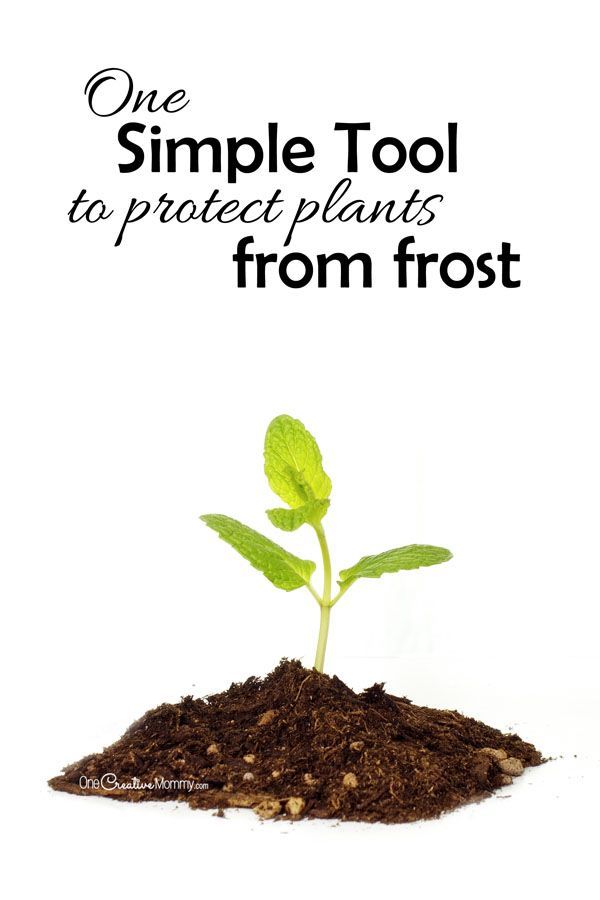 Some use old coats, sweaters, rugs, but special material is better.
Some use old coats, sweaters, rugs, but special material is better.
Inside, on both sides, place smoke bombs that will "beat" the frost, preventing it from destroying the roots, as well as the ovaries and tender leaves. If, despite all your measures, the pistils and tender upper leaves still turned black, agronomists advise throwing away spoiled seedlings without pity, because you still can’t get an early harvest from it. It will be easier to buy a new one than to nurse a frozen one.
2. Heating.
There is another way, conditionally called "Chinese", because it is often used by the Chinese, who grow vegetables and fruits in Russia. A hole is cut in the lid of an enameled bucket, into which a conditional pipe is inserted. It is brought out of the greenhouse, and 2-3 large pieces of coal are ignited in a bucket. Such a "stove" is able to heat a small greenhouse even at severe sub-zero temperatures. A small portable stove and even a barbecue will do, the main thing is to cover it from above and holes from the sides so that the coals do not get on the seedlings.
3. Covering.
Shrubs can be covered with foil or the same covering material before frost. They also need to be thrown onto arcs installed around the bushes. If using cling film, make sure that there is no contact with the leaves, otherwise the morning dew can kill the delicate greens. Smoke bombs installed inside such domes will also help.
4. Bonfires.
Trees are saved with bonfires. This is perhaps the most time- and effort-consuming method. Firstly, they use raw firewood, wet straw, hay or tree branches that do not just burn, but smoke, smoke, so that the smoke spreads above the ground, protecting shrubs and trees. This is especially important for young trees, whose roots have not yet gone deep into the ground and which frost can easily kill.
Secondly, you need to make sure that the fires do not flare up, so that the smoke maintains the desired density. To do this, I advise experienced gardeners to build a "smoke hut" - that is, put two or three large logs or stakes in a triangle, inside which firewood will burn, and pour wet grass, hay, straw, tops outside. In general, everything that is at hand.
In general, everything that is at hand.
Thirdly, the distance between the fire and the trees should be at least 4-5 meters (so as not to accidentally damage the roots). At the same time, the smoke should, as it were, wrap the whole garden with a blanket. Therefore, often gardeners do not sleep all night.
Still, this method is still not very effective if the air temperature is expected to be below minus 3 degrees.
5. Irrigation.
Finely dispersed watering can most effectively protect delicate shrubs from frost - moistened soil cools less and transmits heat well. It is especially effective if the temperature does not fall below 3 degrees of frost.
On the eve of frost, it is necessary to water the ground abundantly, and precisely with finely dispersed sprinkling. This will provide the necessary evaporation, which will help protect the leaves and roots from frost. Very effective with smoke fires.
IMPORTANT
Frost harbingers - dry, calm weather, a sharp drop in temperature in the evening. The pressure is rising, the sky is clearing, the stars are pouring out. There is complete silence in nature, even the nightingales and frogs stop singing.
The pressure is rising, the sky is clearing, the stars are pouring out. There is complete silence in nature, even the nightingales and frogs stop singing.
Age category of the site 18+
The online publication (website) is registered by Roskomnadzor, certificate El No. FS77-80505 dated March 15, 2021.
EDITOR-IN-CHIEF OF THE SITE - KANSK VICTOR FYODOROVICH.
THE AUTHOR OF THE MODERN VERSION OF THE EDITION IS SUNGORKIN VLADIMIR NIKOLAEVICH.
Messages and comments from site readers are posted without preliminary editing. The editors reserve the right to remove them from the site or edit them if the specified messages and comments are an abuse of freedom mass media or violation of other requirements of the law.
JSC "Publishing House "Komsomolskaya Pravda". TIN: 7714037217 PSRN: 1027739295781 127015, Moscow, Novodmitrovskaya d. 2B, Tel. +7 (495) 777-02-82.
Exclusive rights to materials posted on the website www.